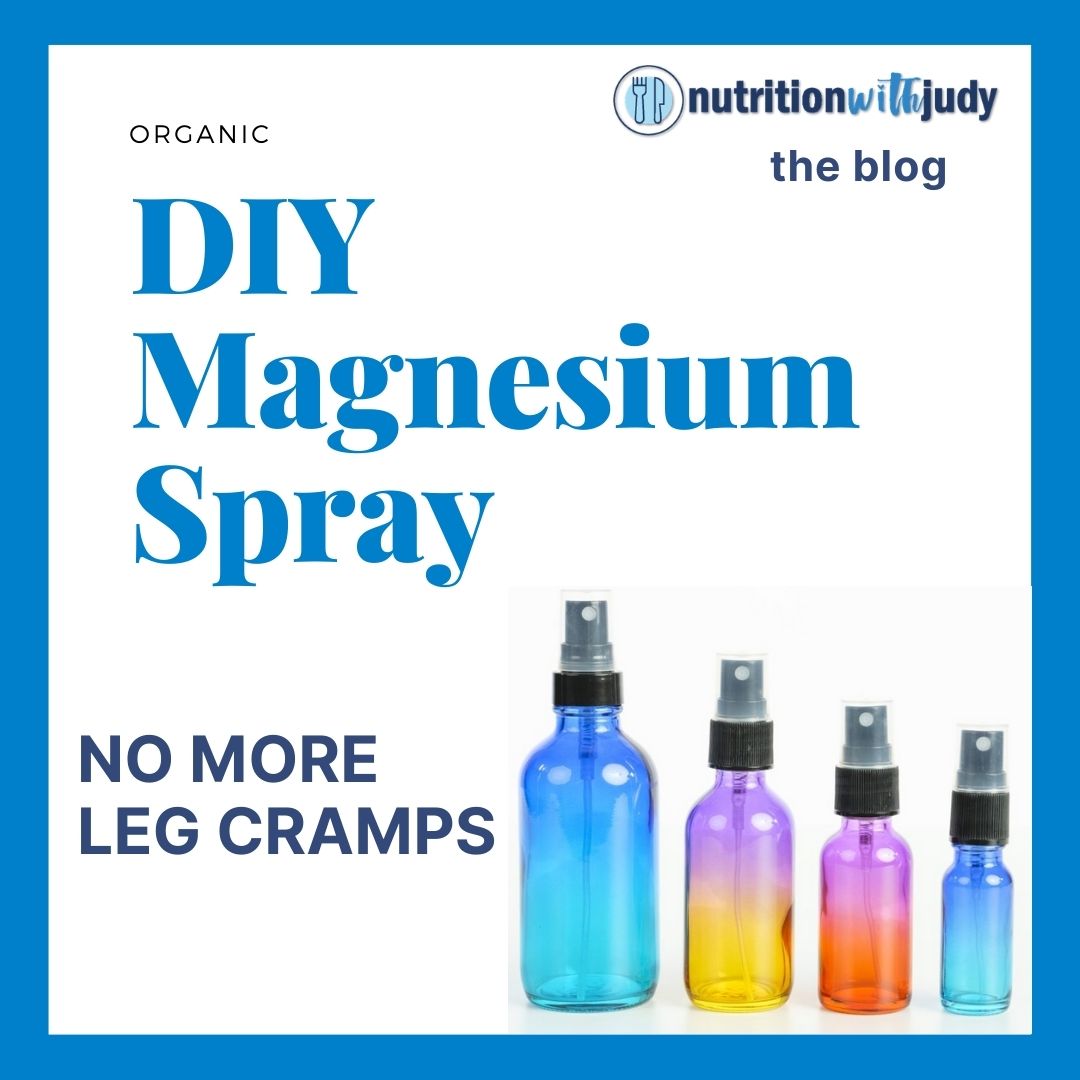

DIY Organic Magnesium Spray


One of the most common symptoms from meat-based and low carb dieters are leg cramps and muscle aches. It’s time to try some magnesium.
We are deficient in magnesium as a country. It makes sense. So many plant-based foods have antinutrients that block magnesium absorption (oxalates, phytates). Caffeine also depletes magnesium. Alcohol, stress and lack of sleep depletes magnesium.
We need magnesium for the muscles to relax.
When we eat meat-based, keto or low carb, we store less magnesium in the body because we hold less water (water + electrolytes). But as our body finds a new balance, we should need less exogenous electrolytes.
I use the magnesium spray if I didn’t drink a lot of water or if I had a stressful day. But usually, I don’t need it.
Sure, as the body adapts when first transitioning to carnivore-keto, we may need electrolytes, but we need to let the body find its own balance. Now if you have a lot of stress in your life, it will deplete nutrients and then balancing electrolytes and minerals will be hard to do.
I don’t need any electrolytes unless I’m extended fasting. (even then, usually, extra high-quality sea salt works.
Here’s an excerpt from Carnivore Cure,
“Magnesium is required for over 600 reactions in the body. In fact, every cell in the body needs magnesium. Magnesium is a naturally occurring mineral that is important for the muscles and nerves. Fifty percent of the U.S. population is magnesium deficient and as high as 80 percent if you consider the western population.[1]
Magnesium is one of the main electrolytes needed when following a low carbohydrate diet. Remember, you need magnesium to assimilate vitamin D properly. You also need magnesium to have potassium, and calcium ions travel across membranes. Many foods that contain potassium also contain magnesium (avocado). It is nature’s way of striving for homeostasis because low levels of magnesium can cause low levels of potassium. This is why supplementing potassium—when you are, in fact, deficient in magnesium—is futile.
When my client shows signs of low electrolytes, I have them try salt first, then some topical magnesium spray, but rarely ever potassium.
…. Blood sugar dysregulation is a significant contributor to magnesium deficiency. To metabolize one molecule of glucose (sugar), you need twenty-eight molecules of magnesium. You need fifty-six molecules of magnesium to metabolize one molecule of fructose (honey, fruit, high fructose corn syrup). Our modern lifestyle is filled with man-made toxins. The body has elaborate detoxification pathways, but every detoxification pathway in the body requires magnesium.[2]
Magnesium is so important that I talk about it for four pages in the book (colored graphics and tables included).
I have clients that if they miss a single day of electrolyte drops, they feel bad (run down, lower energy, muscle cramps at night). Let’s not make electrolytes a long term habit.
When you first transition, electrolytes such as Trace Minerals, LMNT and KetoChow all work well. If you extended fast or have a day of extraneous workouts or being in the sun, then these can be reasons where you may need more.
But daily, we don’t need them. Stick to some salt and magnesium spray.
I’m not a fan of magnesium-specific supplementation because it can take a long while for the blood to show increasing numbers.
Magnesium sprays bypass the gut and go directly into the transdermal layer and get absorbed. This is why when spraying on the leg muscles, I am pretty confident you won’t get leg cramps anymore. (this is not medical advice!)
I always recommend a magnesium spray that I had used when I first started keto. I probably have recommended thousands of times now. It’s less than $15 but if you want to make your own and make ones that don’t have sulfur, here you go!
The biggest benefit of making your own is if you have a sulfur sensitivity. Some people need to limit sulfur while they heal their gut and this DIY might be your best option. Most Epsom salts are from Magnesium sulfate. You may need to skip it temporarily. (You’ll know if you can’t tolerate sulfites).


Make sure to buy magnesium chloride flakes or power. This one is good. Or if you don’t have a sulfur intolerance, you can get this magnesium chloride, which has MSMsulfur, which essentially helps you to detoxify even better. (Our master antioxidant, glutathione, requires sulfur for production).
These bags will last you for a long time. (The ingredients call for half a cup and the bag is 1.65lbs.)
DIY Magnesium Spray
Ingredients:
- ½ cup of Magnesium Chloride powder or flakes (or Magnesium Chloride + MSMsulfur)
- ½ cup of distilled water
- Glass measuring cup
- Spray bottle (I recommend glass). Plastics aren’t ideal.
Steps:
- Boil the distilled water.
- Place the magnesium chloride powder/flakes in the glass bowl.
- Pour the boiling water over the powder/flakes.
- Stir until the magnesium powder or flakes are completely dissolved.
- Cooldown completely.
- Store in the spray bottle.
The spray can be stored at room temperature for at least six months.
I have my clients spray on their inner thighs or calves (two sprays per side) but you can go up to 20 sprays daily.
The first time you use the spray, it can feel a bit of burning but it goes away after a few uses. (So don’t use 20 sprays the first day!)
Build up to using the magnesium spray. Some clients use the spray as magnesium oil and lather it around the body. You can leave it on your skin or you can wash off after 30 minutes.
Try making the DIY spray and let me know if it helps with leg cramps!
Let’s start trusting the body and stop taking electrolyte drops.
Tag me on social media @nutritionwithjudy with your cool magnesium bottles (or your cramp less legs!)
[1] Deng et al., “Magnesium, Vitamin D Status and Mortality.”
[2] DiNicolantonio, O’Keefe, and Wilson, “Subclinical Magnesium Deficiency,” e000668.; Barbagallo, “Magnesium and Type 2 Diabetes,” 1152.




Lisa Arsenault
January 3, 2021 at 5:38 amHi Judy. Can I use the Epsom salt that I would use in the bath (purchased from Costco). The only ingredient is Magnesium Sulfate Heptahydrate USP.
Nutrition with Judy
January 7, 2021 at 10:11 pmSome people have sensitivities to sulfur but if not, it should be fine to make a spray (not to consume)
Aidan
March 15, 2023 at 6:22 pmHi Judy. I’m a big fan of how non black and white you are on topics. I’m ketovore mostly. I don’t have leg cramps but am super stressed through things out 9f my control. What supplement should i be taking if not the spray. Also I’ve eaten Epsom salt sometimes thinking it was ok. What’s the risk their?
I started keto and then carnivore after developing hepatitis after my first jab and lost work becoase I wouldn’t have another. So I actually had fatty liver and too much weight rsther than food intolerances tho I must say now when I feel odd after a food – red peppers for instance – I wonder if I always had some intolerance. Many thanks. I’d be happy to hear any advice and most grateful.